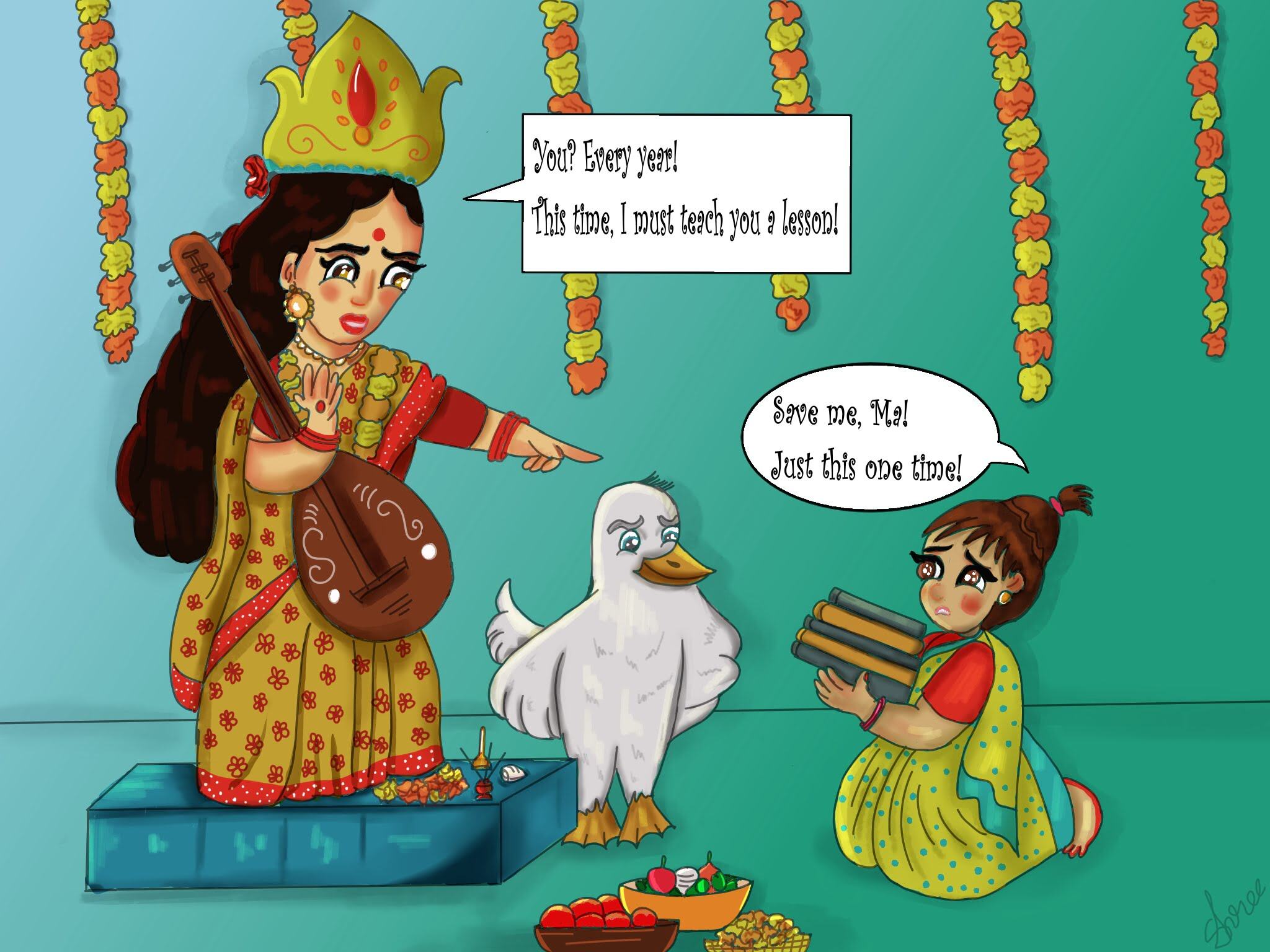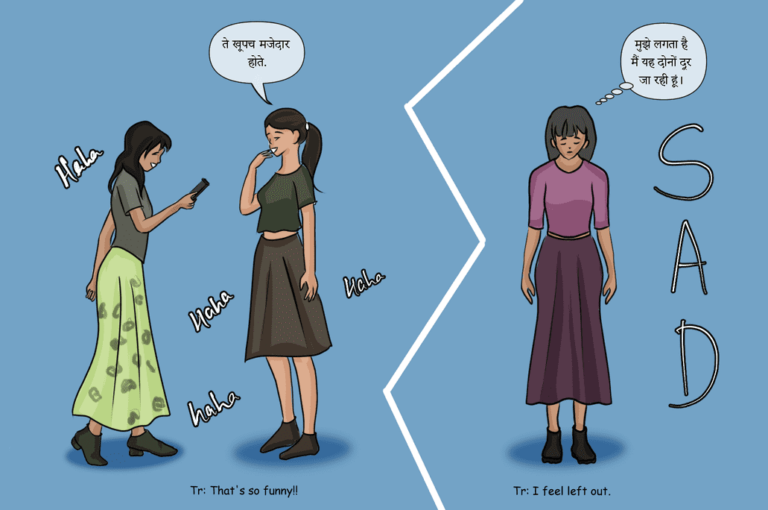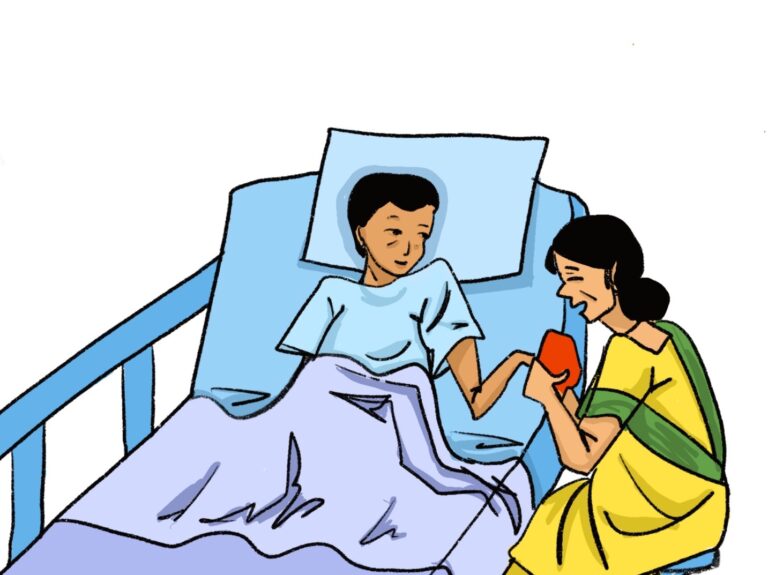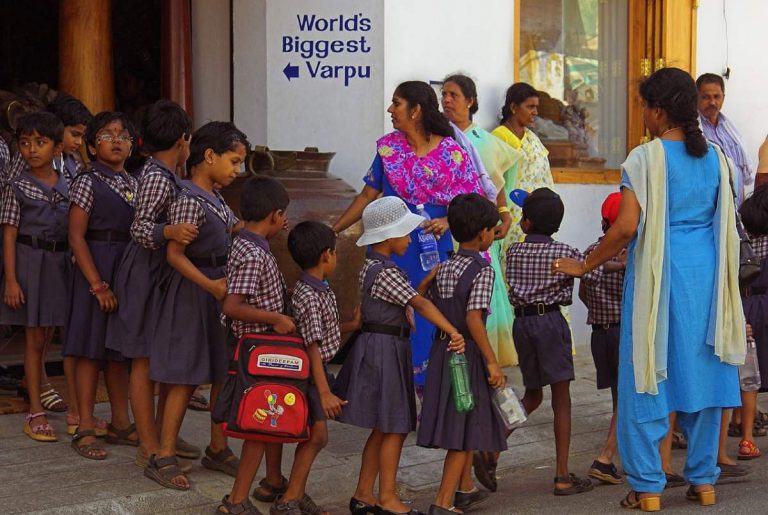Saraswati Puja: Are we losing the charm?

Jayeeta is an avid reader, compulsive writer, book illustrator, frantic mother and a strong believer of diversity in workplace
Sometimes I feel that a century has passed since the time when I used to be a child. Technically it hasn’t been more than 25-30 years but it seems that the world around has gone through a tremendous change, a complete unrecognisable makeover since the 1990s. Probably some of this change has rubbed itself on me and I am sad to say that I’m a changed person or maybe I have become what is known as “a grown up”.
Some of the transition that has happened are for good, or so I feel. Such as – these days the parents are more accepting towards their children pursuing a subject of their choice, or not comparing their children’s report card with that of their office colleagues’. But a change that I cannot come to terms with is – the shift in emotions, away from “Saraswati Puja”, especially in case of Bengalis. Maybe I’m wrong. Maybe the craze is still there somewhere but I feel that some of the sentiments associated with it are dwindling away as is the case with so many other “rituals” and festivities which were healthy for the mind, soul and the society.
No, no, this is not a lamentation of the past. Rather a desperate attempt to relive that moment of joy and capture it with words. There weren’t too many modes of entertainment available for the children of the nineties, at least for those who grew up in middle class families like ours. Studies along with one extra curricular activity such as drawing or singing or classical dance – were what kept us occupied most of the time except when we played with friends outdoors. Not much of TV except Vikram and Betaal or Potli Baba ki Kahaani. Given this situation, the children of our times felt really, really forlorn and were at an all time low when Maa Durga left for Kailash, Kali Puja crackers were spent and Christmas cake was eaten.
As if to ease the state of mind, there was another celebration, which we were told, “should” have a special significance in our lives and it had something to do with how our future may turn out be. For if I did not pray to the Goddess Saraswati with ample reverence, her wrath may befall upon my examination answers and my career may be limited to washing vessels in other people’s houses. Coming to think of it now, I feel that it wasn’t such a bad career choice either because it meant that I would have to work under no deadlines, pay no income tax, serve no notice period, no additional responsibilities for annual increase in salary and certainly no component of salary depended on performance.
Anyhow, it was not a joke then. And we took this pretty seriously. So much so that, on the day of the puja, even though the thought of awesome food being cooked at home filled my mind, I tried to concentrate on uttering the mantra-s exactly as the priest said, lest, Maa Saraswati noticed that I have said a half hearted prayer.
Actually, the festive feeling started when the “mrit shilpi” or the potter-cum-clay modeller in our locality lined up the deity’s straw structures outside his house for drying. There were scores of them, of different sizes. Some deities were small for those who would worship the goddess at home and the bigger ones for schools and colleges and the really big ones for pandal-s. Everyday as we returned from school we crossed that place and it delighted us to see how the work has progressed. Layers and layers of clay got added that made the Goddess more lifelike. And I often wondered how is it that all of them looked so beautiful, so perfect – their eyes, nose, mouth and fingers. When the beautiful black tresses were added and the deities were decked with saree – mostly white or yellow, we knew that the day is round the corner.
The day of the Saraswati puja was special. We took bath particularly early in the morning and it was no mean feat because it was winter. Although we could smell the delicious aloo dum being cooked or green peas kachori being fried, we had to resist our temptation to attack the food. Till the “pushpanjali” or “worshipping the Goddess with flowers” took place, no food. I always feared that salivating was a sin too, because if it was, then I was a big sinner. Many other girls like me had no knowledge or skill to drape a saree. So we were dependent on our mothers to take time off from cooking and don the saree on us. The sarees had to be of yellow hue or “basanti” coloured.
After this we lined up to be taken to a nearby temple or pandal for offering our prayers. The priest would recite mantra-s. He would pause thrice. And during these three pauses we had to offer the flowers in our hands to Maa and we tried our best to aim at her feet so her blessings would be instantaneous. Our books, note books, pencils were placed at the goddess’s feet and kept there for the whole day. It served two purposes – first, Maa Saraswati got a lot of time to bless all our books equally and adequately; second, we did not have to touch our books the whole day.
After the prayers, we reached home to gulp down delicious food and rushed out to join our friends to go pandal hopping and visit our schools. There was another reason behind the urge of visiting schools for those who studied in co-ed institutions. For the uninitiated, “Saraswati Puja” is also referred to as the Bengali Valentine’s Day. How many letters have been written, accepted and rejected on these days only if time could keep a record.
For some families like ours, the day following Saraswati Puja is known as “Arandhan” which means , no food would be cooked on that day. The food had to be cooked on Saraswati Puja itself including an interesting dish known as “gota sheddho” or vegetables cooked in a yummy sauce without being chopped or peeled. It was a one pot recipe where peas (without being peeled), baby brinjals without removing the stalk, tender spinach branches and many other nutrition packed items that we would otherwise not eat were suddenly served to us in a delicious recipe. I wonder why my mother didn’t make it everyday!
In the evenings everybody in the family – the fathers, sisters, brothers sat together to help the mothers prepare for the kitchen strike the next day. With stomach and heart full with food, love and blessings we went to sleep in peace. And thus a happy day was spent every year in our lives. When we were in college, it was the responsibility of the students to help organise the Saraswati puja. And every one of us did so irrespective of whether we are Hindus, or Christians or Muslims or Sikhs. The feeling was pretty uncomplicated and simple. Therefore the joy was unadulterated.
Like the Saraswati Puja, there are festivities, rituals and celebrations all over India which are so unique and beautiful. Some of those we have retained, commercialised and taken forward, while some have vanished into oblivion.
“Akshay Tritiya” for example. Many of us may not know what it is and why we celebrate it but we do know that on that day it is auspicious to buy gold because the jewellery companies say so! Perhaps it is not relevant anymore and hence not necessary. But it’s good to know about them so we talk about such things to our children. Dinosaurs are not relevant anymore but we have still kept them alive in museums, in films and in “10 T-Rex s trampoline, trampoline!” songs, haven’t we?
Featured Image Credits: Wikimedia









Readers' Reviews (3 replies)